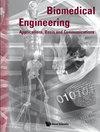一个改进的混合深度网络,用于从OCT图像中自动分类青光眼
IF 0.6
Q4 ENGINEERING, BIOMEDICAL
Biomedical Engineering: Applications, Basis and Communications
Pub Date : 2022-09-15
DOI:10.4015/s1016237222500429
引用次数: 0
摘要
光学相干断层扫描(OCT)在眼科的应用使得青光眼的早期检测取得了重大进展。识别视网膜疾病的传统方法包括病史分析和视网膜图像的手动评估。人工诊断耗时,需要相当多的专业知识,没有这些专业知识,错误可能会对人类视力造成严重损害。近年来,在图像分析中使用机器学习技术等人工智能技术已经取得了进展,可以从视网膜图像中进行准确、快速和经济有效的诊断。本研究提出了一种结合深度卷积(DC)的有向无环图(DAG)网络,从OCT图像中果断地识别早期视网膜青光眼。该方法充分利用了深度卷积和DAG的优点。在该结构中获得的卷积神经网络(CNN)信息按照节点上的偏序进行处理。采用Grad-CAM方法量化和可视化正常和青光眼OCT热图,以提高诊断的可解释性。实验在LFH_Glaucoma数据集上进行,该数据集由1105个青光眼和1049个健康OCT扫描组成。提出的更快的混合深度有向无环图网络(D-DAGNet)在只有0.0047 M可学习参数的情况下,准确率为0.9995,精密度为0.9989,召回率为1.0,f1分数为0.9994,AUC为0.9995。混合D-DAGNet提高了网络训练效率,显著减少了识别感兴趣特征所需的可学习参数。该网络克服了深度网络中由于层数增加而导致的过拟合和性能下降的问题,因此可用于实时识别视网膜OCT图像中的青光眼特征。本文章由计算机程序翻译,如有差异,请以英文原文为准。
D-DAGNet: AN IMPROVED HYBRID DEEP NETWORK FOR AUTOMATED CLASSIFICATION OF GLAUCOMA FROM OCT IMAGES
The introduction of Optical Coherence Tomography (OCT) in ophthalmology has resulted in significant progress in the early detection of glaucoma. Traditional approaches to identifying retinal diseases comprise an analysis of medical history and manual assessment of retinal images. Manual diagnosis is time-consuming and requires considerable human expertise, without which, errors could be costly to human sight. The use of artificial intelligence such as machine learning techniques in image analysis has been gaining ground in recent years for accurate, fast and cost-effective diagnosis from retinal images. This work proposes a Directed Acyclic Graph (DAG) network that combines Depthwise Convolution (DC) to decisively recognize early-stage retinal glaucoma from OCT images. The proposed method leverages the benefits of both depthwise convolution and DAG. The Convolutional Neural Network (CNN) information obtained in the proposed architecture is processed as per the partial order over the nodes. The Grad-CAM method is adopted to quantify and visualize normal and glaucomatous OCT heatmaps to improve diagnostic interpretability. The experiments were performed on LFH_Glaucoma dataset composed of 1105 glaucoma and 1049 healthy OCT scans. The proposed faster hybrid Depthwise-Directed Acyclic Graph Network (D-DAGNet) achieved an accuracy of 0.9995, precision of 0.9989, recall of 1.0, F1-score of 0.9994 and AUC of 0.9995 with only 0.0047 M learnable parameters. Hybrid D-DAGNet enhances network training efficacy and significantly reduces learnable parameters required for identification of the features of interest. The proposed network overcomes the problems of overfitting and performance degradation due to accretion of layers in the deep network, and is thus useful for real-time identification of glaucoma features from retinal OCT images.
求助全文
通过发布文献求助,成功后即可免费获取论文全文。
去求助
来源期刊

Biomedical Engineering: Applications, Basis and Communications
Biochemistry, Genetics and Molecular Biology-Biophysics
CiteScore
1.50
自引率
11.10%
发文量
36
审稿时长
4 months
期刊介绍:
Biomedical Engineering: Applications, Basis and Communications is an international, interdisciplinary journal aiming at publishing up-to-date contributions on original clinical and basic research in the biomedical engineering. Research of biomedical engineering has grown tremendously in the past few decades. Meanwhile, several outstanding journals in the field have emerged, with different emphases and objectives. We hope this journal will serve as a new forum for both scientists and clinicians to share their ideas and the results of their studies.
Biomedical Engineering: Applications, Basis and Communications explores all facets of biomedical engineering, with emphasis on both the clinical and scientific aspects of the study. It covers the fields of bioelectronics, biomaterials, biomechanics, bioinformatics, nano-biological sciences and clinical engineering. The journal fulfils this aim by publishing regular research / clinical articles, short communications, technical notes and review papers. Papers from both basic research and clinical investigations will be considered.
 求助内容:
求助内容: 应助结果提醒方式:
应助结果提醒方式:


